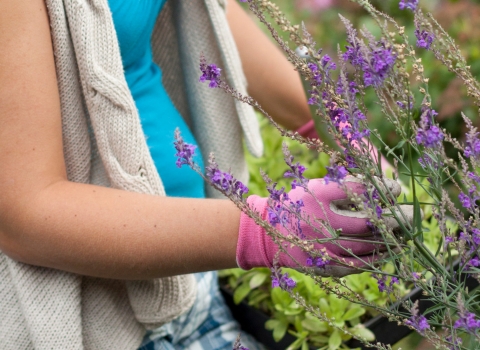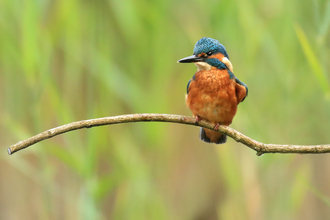You can help save the most important creatures on the planet
From the shimmering jewel tones of rosemary beetles and the colourful wings of fluttering butterflies, to mayfly ballets and the lazy buzz of bumblebees, the world would be a gloomier place without our huge diversity of insects.
Sadly, a world without insects isn't as far-fetched as it might sound. 41 per cent of insects now face extinction, but it's not too late.

Sign up to take Action for Insects in your home or garden and you'll receive a free guide with all the information and support you need to start helping insects where you live. You can also download a community guide that will help you inspire your local council and wider community to take action in your town, city or parish.
Inside you'll find information and tips on insect-friendly gardening, going chemical-free and even more small actions you can take that will really make a difference to insects.

Image by Paul Harris/2020VISION
Download our Action for Insects school guide
Whether it's through a bug hunt, creating insect homes in your school grounds, or delivering a campaign to help insects, there are lots of ways that your school can make a difference and learn at the same time.

Male red-tailed bumblebee by Rachel Scopes
Say no to neonics
The decision to allow emergency use of neonicotinoid thiamethoxam goes against all commitments the Government has made to help nature. It will have far-reaching consequences our already plummeting insect population.
What's happening to our insects?
We're living through a terrifying decline in insect numbers. In fact, insects are dying out up to eight times faster than larger animals and 41 per cent of insect species face extinction. This impacts us all - both humans and wildlife. Insects pollinate three quarters of our food crops and are the main food source for many birds, mammals, amphibians, reptiles and fish. As insects continue dying out, we will all feel the effects.
Our recent report by Professor Dave Goulson – ‘Insect declines and why they matter’ – reveals that habitat loss, changes to land management and the use of pesticides are proving catastrophic for insects. And now, a new report by Professor Dave Goulson offers cause for hope. Bringing together inspiring stories from farmers, communities, councils and charities across the UK, ‘Reversing the decline of insects’ proves how reducing our use of pesticides where we live, work and farm, and creating more insect-friendly habitats in towns, cities and the countryside can help insects thrive once more.
Be part of a Nature Recovery Network
The new Environment Act calls for the creation of Nature Recovery Networks (wild places across the country that are connected to give nature room to thrive, on land and at sea) to be enshrined in law. By making 'bug hubs' in your garden to attract insects, your wild patch will become part of this Nature Recovery Network and give wildlife more room to thrive on your doorstep.
Watch David Attenborough explain more about Nature Recovery Networks, below.
Every space in Britain must be used to help wildlife
How will a Nature Recovery Network help insects?
We can turn our towns, cities, villages and gardens into a buzzing network of insect-friendly refuges. With about half a million hectares of gardens in the UK, plus city parks and green spaces, school playing fields, railway embankments and cuttings, road verges and roundabouts; if managed favourably, and if we avoid pesticide use, these areas could go a long way towards creating a national Nature Recovery Network.
More ways to support us
By managing nature reserves and restoring wild places, commenting on planning applications, lobbying government and even reintroducing locally extinct butterflies, we fight for insects every day. As a charity, we couldn't do this without the generous support of people like you.









